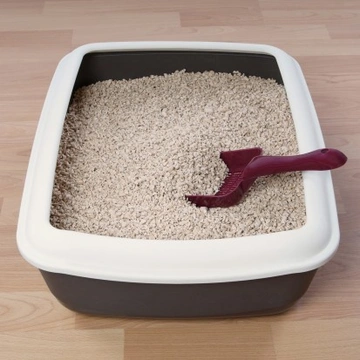
Litter tray etiquette for cat owners
Whether you have one cat or several, and even if your cat usually does their business outdoors, you will almost certainly need to provide a litter tray for your cat at some stage in their lives. For many cat owners who keep their cats indoors or close them in at night, the presence of a litter tray is a permanent fixture within the home, and providing that your cat uses it appropriately and you keep it nice and clean, the chances are that you will not run into any difficulties.
Cats are very fastidious about their toileting habits, and will often refuse to use a litter tray that they are unhappy with, particularly if it is not kept clean, is shared with multiple cats, or proves stressful to use. In order to ensure that you do not run into any problems involving your cat’s use of the litter tray and to make sure that you are providing everything that your cat needs to feel comfortable with their toileting provision, read on to learn about the important elements of litter tray etiquette when making provision for your cat.
How many litter trays?
While many multi-cat households simply provide one litter tray for all of the cats, this is not ideal, even if you clean the tray out very regularly. For a lone cat, one litter tray is ok but two is better, and for multi-cat households, you should provide a different litter tray for each cat, plus one additional tray too.
Litter tray type
As well as the basic flat tray style of litter box, there are multiple other options including corner litter trays, trays with high sides, and enclosed litter trays with a cat flap entrance. You may have a marked preference for one particular type of litter tray, but ensure that your cat agrees with you! Particularly if you introduce a new style of litter tray or use an enclosed tray, be sure that your cat recognises it as a litter tray and understands how to use it!
The size of the litter tray
A litter tray that is too small will be uncomfortable for your cat to use, and may cause litter and “other stuff” to be kicked out of the litter tray when your cat uses it. Ensure that the litter tray is large enough for your cat to use comfortably, but do not use an oversized tray as an excuse to clean it less often. Also, if you prefer a high-sided litter tray, ensure that your cat can get in and out of it comfortably.
Where to locate it
Multiple litter trays should be placed in different rooms of the home, and they should always be in quiet places where your cat can do their business without being interrupted or getting stressed. Don’t place the litter tray somewhere particularly cold, but also do not place it next to a radiator, as this may cause it to smell bad.
What type of litter to use
Some cats have a marked preference for one type of cat litter over another, and may refuse to use a type that they dislike or are unfamiliar with! There are a huge range of different types of cat litter, made of many different substances and designed to clump or not, neutralise smells, be flushable, and more. What you use is up to you and your cat, with two caveats: Do not use clay cat litter as this can cause intestinal blockages if your cat licks the dust off their paws, and do not use anything perfumed or strongly scented.
How much litter to use
You should fill the litter tray to a depth of at least a couple of inches, and the more litter you place within the box, the easier it will be to clean out and the happier your cat will be with burying their waste. Don’t fill the litter box so deeply that your cat cannot avoid kicking litter outside of the box when using it, however.
Cleaning the litter tray
Failing to clean the litter tray often enough is one of the most common cat litter tray problems, and as cats are scrupulously clean animals, you must make sure that you clean it out often enough to keep them happy. Remove solids and wet patches from the box at least twice a day, topping up any litter removed.
Once a week, empty out all of the litter, disinfect the tray and when it is dry, replace the litter with a fresh batch.
When your cat is doing their business
If your cat is using the litter tray or approaching the tray, it is important not to interrupt them or divert their attention. Cats like peace, quiet and no watchful eyes on them when they want to do their business, and not allowing for this will cause your cat stress and may put them off using the box at all. Never touch or speak to your cat while they are doing their business or in the litter box, and accept that your cat may spend some time after they have been to the toilet burying their waste to their satisfaction. This can prove frustrating if you are waiting to get in there and remove their waste, but it is important to allow your cat the time and space that they need to tackle their litter box usage without being rushed.



